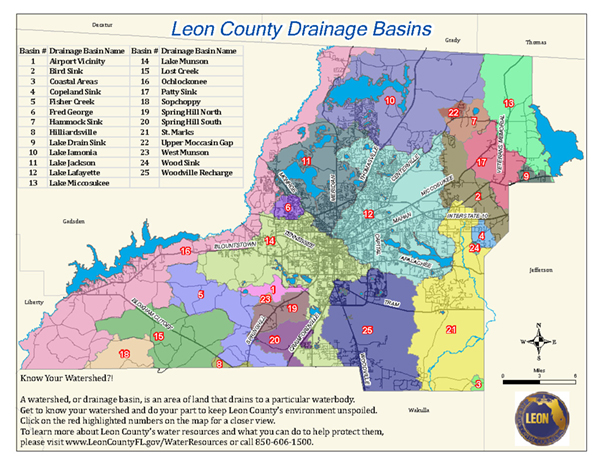Importance of Watersheds
Leon County is covered by 25 watersheds-also referred to as drainage basins- that drain to waterbodies such as Lake Miccosukee, Lake Jackson and the St. Marks River. Watersheds can be small or large, but all eventually drain to an outflow point such as a lake, bay or ocean. In Florida, many watersheds drain directly into the Floridan aquifer, which is a main source of our drinking water. In Leon County, outflow points could be a lake, river, creek or sinkhole.
Watersheds are formed by the natural ridges and depressions of the Earth’s surface and can be very small or very large depending on the area. The highest points of the land create the boundaries between each watershed, also known as the drainage divide. For example, in Leon County when rain falls in the area at the intersection of N. Monroe St. and I-10, the runoff to the north flows towards Lake Jackson while the runoff to the west ends up in Lake Munson.
How Leon County Protects our Watersheds
Leon County protects our watersheds through both regulatory efforts and capital construction projects. Regulatory efforts include conservation of natural features and land use restrictions through the Planning Department's Comprehensive Plan and permitting of stormwater and wetland impacts through the County's Development Support and Environmental Management. Through capital projects, the County assesses current code requirements and works to enhance existing water systems by constructing stormwater retrofits for water quality and flood protection.
How You Can Protect our Watersheds
Leon County encourages citizens and residents to know their watershed and take personal action to prevent pollution from occurring in or near a watershed. View your watershed on the map below and on the Interactive Water Quality Map or check out the Think About Personal Pollution Map to see how personal pollution carried by a single drop of water will find its way into our local water resources.
